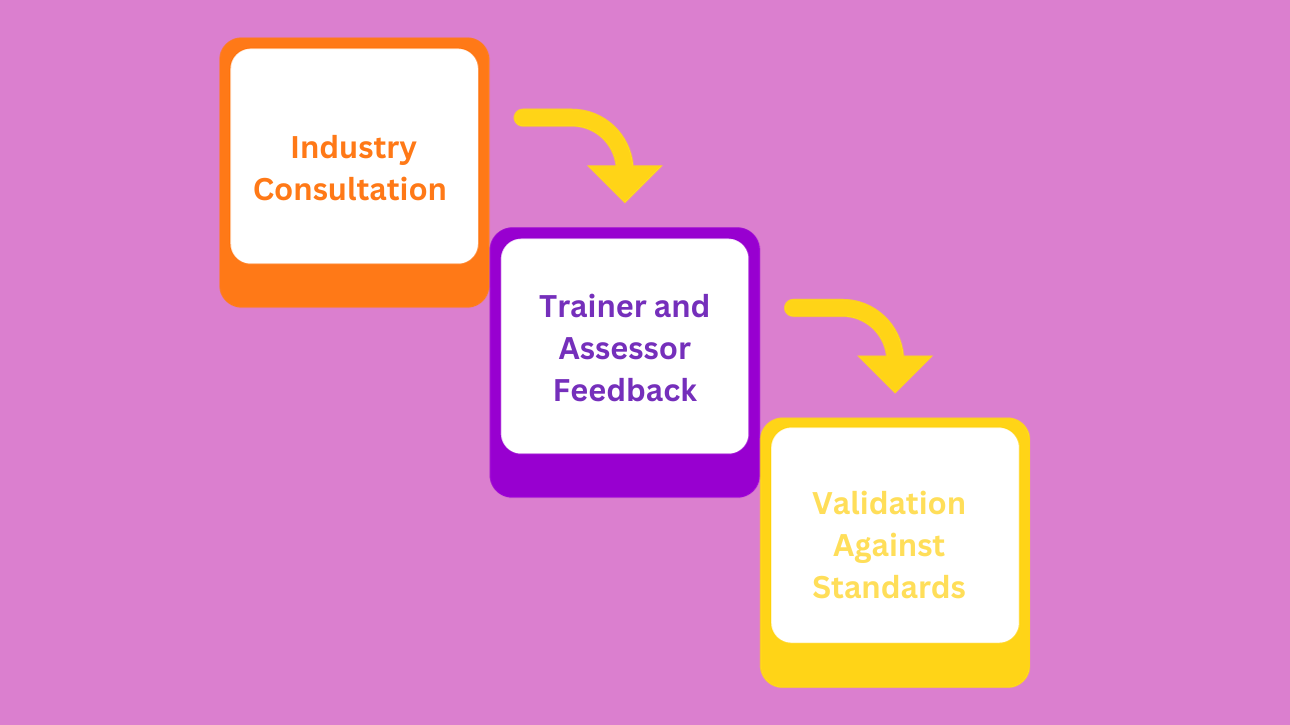Introduction
G’day, RTOs from all corners of Australia! Are you puzzled about how to make third-party resources resonate with your students? Or perhaps you’re wondering how to align these resources with the unique needs of your learners? If that’s the case, you’re in the right place! This blog post, inspired by a [VET Resources YouTube video](https://www.youtube.com/watch?v=3voyoaqbsaU), aims to demystify the complexities of contextualizing RTO resources. So, grab a cuppa, and let’s get started!
Why Cohort-Specific Alignment is Non-Negotiable

First things first, aligning third-party resources with the specific needs of your student cohort is not just a good-to-have; it’s an absolute must. This goes beyond mere compliance; it’s about delivering an educational experience that is both meaningful and impactful.
The Real Impact of Alignment
When your resources are in tune with your students’ needs, you’re not just meeting compliance requirements; you’re elevating the entire educational journey. This leads to increased student engagement, improved retention rates, and ultimately, more successful educational outcomes.
The Mechanics of Contextualization: A Deep Dive
Contextualizing your resources is not an optional extra; it’s a critical component of effective education. But what does this entail? The answer lies in a multi-faceted approach that involves industry consultation, trainer feedback, and rigorous validation.
A Step-by-Step Guide to Contextualization

- Industry Consultation: The first step is to engage with industry experts and stakeholders. Their insights can provide a real-world perspective that is invaluable for aligning your resources with industry needs.
- Trainer and Assessor Feedback: Your trainers and assessors are the ones who interact with your students daily. Their feedback can provide crucial insights into what works and what needs to be improved.
- Validation Against Standards: After contextualizing your resources, it’s essential to validate them against Clause 1.8 to ensure they meet the principles of assessment and the Rules of Evidence.
The Growing Importance of RPL Resources in 2023
Recognition of Prior Learning (RPL) is an area that has often been overlooked but is gaining more attention. With ASQA focusing on RPL in 2023, it’s crucial to have robust RPL resources that meet compliance standards.
The Significance of RPL
RPL is not just a compliance checkbox; it’s a powerful tool for social mobility and workforce readiness. By recognizing the skills and knowledge that students have acquired outside formal education settings, RPL enables more people to gain qualifications and advance in their careers.
Compliance: The Cornerstone of RTO Success
Compliance is not just about avoiding penalties; it’s about building a reputation for quality and trustworthiness. Here are some key points to keep in mind:
Key Compliance Considerations
- Clause 1.8: This is the cornerstone for conducting effective assessments. Always validate your assessments against this clause to ensure you’re in compliance.
- Transparency and Documentation: Open and transparent communication is vital. Document all changes, validations, and consultations to maintain a transparent and accountable operation.
Future-Proofing Your RTO: Strategies for 2023 and Beyond
The VET landscape is constantly evolving. To stay ahead of the curve, RTOs need to be agile, adaptable, and proactive.
How to Future-Proof Your RTO
- Continuous Learning: The VET sector is dynamic, and staying updated is crucial. Invest in professional development for your staff and keep an eye on industry trends.
- Technology Adoption: The future is digital. Embrace technology to streamline operations, enhance the student experience, and improve outcomes.
Call to Action
Ready to elevate your RTO’s compliance and quality? At VET Resources, we offer a wide range of resources designed to help you succeed. Visit our website today, and don’t forget to subscribe to our [YouTube channel](https://www.youtube.com/channel/VETResources) for more expert insights!
FAQs
- What is Clause 1.8?
Clause 1.8 is a critical standard in the VET sector that outlines the requirements for conducting effective assessments.
- How can I engage with industry stakeholders?
Engagement can take many forms, from surveys and interviews to advisory boards and consultation panels.
- What are common pitfalls in RTO resource management?
Some common pitfalls include poor alignment with cohort needs, lack of compliance, and neglecting RPL resources.
- How often should I update my resources?
It’s advisable to review and update your resources at least once a year or whenever there are significant changes in industry standards or regulations.
- What are the best practices for maintaining compliance?
Best practices include regular internal audits, transparent documentation, and ongoing staff training.
- How can RTOs adapt to the changing landscape of VET?
Adaptability is key. Stay updated with industry trends, invest in staff training, and be open to technological advancements.
- What role does technology play in RTO management?
Technology can streamline operations, improve resource management, and enhance the student experience.
- How can RTOs ensure the quality of third-party resources?
Quality assurance involves rigorous validation, continuous improvement, and alignment with industry standards.
- How can RTOs improve student engagement?
Improving student engagement involves aligning resources with student needs, incorporating interactive elements, and providing real-world context.
- What are the implications of non-compliance?
Non-compliance can lead to penalties, loss of accreditation, and a damaged reputation.
Disclaimer:
The information presented on the VET Resources blog is for general guidance only. While we strive for accuracy, we cannot guarantee the completeness or timeliness of the information. VET Resources is not responsible for any errors or omissions, or for the results obtained from the use of this information. Always consult a professional for advice tailored to your circumstances.





